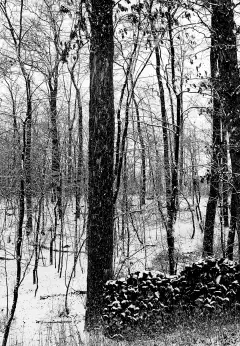By Nic Custer and Jan Worth-Nelson
Although an expected discussion on demolishing Flint Central High School and Whittier Middle School did not appear on the Flint Board of Education agenda Feb. 1, residents shared their concerns about the plan during public comment.
Last year the board released renderings by THA Architects Engineers for constructing a new $78.5 million building proposed as the district’s only remaining high school, at the site on Crapo Street.
Questions about security, cost
The proposal has drawn questions, concerns and opposition from neighbors near the 1923 structure and from historic preservation advocates.
Central Park resident Ingrid Halling said although she applauds the effort to give students new facilities, she has questions regarding the decision-making process and the effects she predicted the change would have on her neighborhood.
She offered five questions to the board, provided in full to EVM.
- At almost twice the land size, with Interstate-69 access and better athletic facilities, why was not Southwestern strongly considered?
- What kinds of increased security would be provided in and near the school property with the library, Cultural Center and residential neighborhood?
- Given past problems, what controls would be placed on leaving the campus during and after school? The Central Park neighbors have said when Central and Whittier were open they experienced repeated incidents of vandalism, fights, speeding cars and teens “streaming” through the neighborhood.
- How much and where is the funding coming from for the demolition and what environmental safeguards would be put into place during the demolition?
- How much and where is the money coming for for new construction?
Nigel Tate, a Grand Blanc high school student, asked the board during public comment if they would let a group of preservationists photograph the interior of the school before it is torn down.
 Peggy Lawrence, vice president of the Genesee County Historical Society and a Flint Central alumna, said after the meeting, “We are opposed to any demolition of Flint Central High School. We support preservation and repurposing.”
Peggy Lawrence, vice president of the Genesee County Historical Society and a Flint Central alumna, said after the meeting, “We are opposed to any demolition of Flint Central High School. We support preservation and repurposing.”
She said the historical society worked with former Fint Mayor Dayne Walling’s administration to develop a site plan to preserve the school and find funding but those plans ended when the city was placed under state receivership in 2011.
The board is not required to respond to statements or questions made during public comment, and did not respond to the questions and comments made about the demolition and proposed new high school.
However, a presentation from the firm designing the proposed new high school supported the case for new facilities.
Many schools need upgrades
Jeff Bennett from THA presented the results of a general facilities study the district commissioned in August. The study examined the district’s remaining nine elementary schools, two high schools and the administration building.
Bennett said since the district began hiring THA to study its facilities in 2000, when the improvement needs were $500 million. It has since closed most of its 50 buildings. The school buildings that remain open – nine elementary schools and two high schools—were in the best condition, he said.
But even the remaining open buildings need work, he said. The two high schools – Northwestern and Southwestern—need $30 million in improvements. He said building a new single high school for the city would allow the district to use that $30 million towards construction, which won’t need substantial improvements for many years.
The administration building on Kearsley Street needs $5.5 million in improvements. Bennett suggested the new high school could also house the administration and save those funds.
The nine remaining elementary schools need an estimated $58 million in physical improvements. He said only $46 million of the improvements are priorities. This includes electrical and heating improvements and asbestos abatement. He added that the students are not in danger currently but with these improvements the schools could be top rated.
There are currently 5,000 students in the district, down from 46,000 in the era when the city’s population was at 200,000.
Neighbors want district outreach
Halling said all the planning at the district level “has been going on without anybody reaching out to the [Central Park] neighborhood.
“For them not to reach out to us is egregious,” she said. “The people who are making these decisions don’t live here. When Central and Whittier were still open there were so many incidents I had the truancy officer and the safety patrol on speed dial.”
The Central Park neighborhood, made up mostly of houses built in the late 1800s and early 1900s and populated by many students in rentals as well as a group of longtime live-in homeowners, is bounded by E. Court Street, northbound Chavez Drive, Robert T. Longway Boulevard and Gilkey Creek. Its residents have been outspoken on many issues affecting their environs.
In 1998-99, a series of cul-de-sacs – closing off Second Street to through traffic downtown, as well as cross traffic on Avon between Kearsley and Court — were built in the Central Park neighborhood using federal grant funds. Halling said the cul-de-sacs are maintained by the neighborhood association and have greatly improved the neighborhood’s quality of life.
EVM Managing Editor Nic Custer can be reached at nicpublishing@gmail.com. EVM Editor Jan Worth-Nelson can be reached at janworth1118@gmail.com.
Photos by Jan Worth-Nelson


You must be logged in to post a comment.